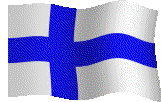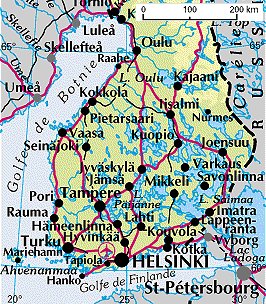
Gustaf Erikson

History
|
He started sailing at the age of 10 years as a cabin boy on the barque Neptun.
In 1900, he got his licence of high sea going master and took command of the barque Southern Belle, that he ended buying in 1917.
In 1906, he took in command the square sail ship Albania.
In 1909, he took in command the barque Lochee (former square sail ship).  In 1913, he decided to become shipowner. He owned many ships during 20 years in
Mariehamn, also in the Åland islands.
In 1913, he decided to become shipowner. He owned many ships during 20 years in
Mariehamn, also in the Åland islands.
He bought his first ship, the wooden three-masted barque Tjerimai in 1913.
She proved to be an excellent investment and served him until 1925 where she was lost in the North sea.
Her captain ignored that the First World war had just started and that the lights were turned off. Erikson so decided to never rename a ship again (he sometimes gave back their initial name to certain ships).
 Very few of his ships were lost (as the barque Borrowdale and the four-masted barque Margareta torpedoed by german submarines).
 In 1916 he bought the majority of the Professor Koch then of the Grace Harwar, built in Glasgow in 1889.
She was the last finnish goods transport sail ship.
Even more unusual, the topgallant mast was mounted aft the main mast. The Lawhill was however, like the Tjerimai, a very good investment, and was soon called lucky Lawhill by his owner. In 1921 he bought the legendary Herzogin Cecilie (sail training ship of the Deutscher Lloyd of Bremen), built in 1902 by Rickmers AG in Bremerhaven.
Rigged as a four-masted barque, she was her faster ship, recording more than 20 knots. Her stranding at Bolt Head near Salcombe in the South Devon in 1936 was a tragedy.
She was a " P-liner ", i.e. a ship owned by Ferdinand Laeisz of Hamburg (although she was not initially built for him), who had sailed on the south american nitrate trade.
Most of the " P-liners " were too expensive for him, but he succeeded however to put hands on the Pommern, the Penang, the Pamir and the Pestalozzi. The Penang was a three-masted barque with steel hull built in 1905 in Bremerhaven under the name of Albert Rickmers. In 1911, Ferdinand Laeisz bought her and put her on the south american nitrate trade.
In 1941, she was reported missing. It is only in 1971 that it was known she had been torpeoded by the german submarine U-140, commanded by the lieutenant Hinsch, without notice. Hinsch, en route for a Cap Horner congress in Mariehamn in 1976, was said he risked to be lynched and he cancelled.
The Archibald Russell did the last transport between the Baltic sea and Australia in 1931. Seized in 1941 by the british government, she was handed back to Erikson in 1948 only. She was scrapped in 1949. The only high sea course where sail ships could compete was the australian grain trade on which all the Erikson's ships of enough size were put in the 30's. All were rigged as barques but the ship Grace Harwar. Most of the barques were four-masted, except the Winterhude, the Killoran and the Penang who had three masts.
Built in 1904 in Glasgow by William Hamilton & Co. as a nitrate transport for a german shipowner, the Moshulu was one of the last deep sea going sail ships. She was put on the grain trade between Australia and Europe during the 30's. Most of the ships on this route were owned by Erikson and there was always a race between them on the homeward bound voyage.
The Moshulu is now a luxury restaurant along the pier in the port of Philadelphia. Her rigging had been refitted and lighted: his only ojective now is appearance...
The Olivebank blew up on a mine in the North sea, the Penang and the Killoran were sank by the Germans.
The Lawhill was taken over as war seizure by the South African government, the Archibald Russell by the british government and the Pamir by the New Zealand government.
The Germans took over the Moshulu in 1942 as she was in Kristiansand when they occupied Norway. After the war, the Viking and the Passat sailed again and made two voyages for the grain trade (46-47 and 47-48). The Pommern needed repairs that Erikson couldn't undertake for the moment, so she laid up in Mariehamn. Erikson was making big efforts to get back the ships which had been seized.
His son Edgar managed then the company and got back the Pamir and the Archibald Russell in 1948. He again owned five sail ships, however only the Passat and the Pamir sailed again for a last grain transport in 1948-1949. It was the last time in history that square rigged sail ships were used for goods transportation, and that a cargo passed the Cape Horn. Edgar Erikson being unable to make money out of the sail ships, he decided to get rid of them.
The Passat ended her life in Travemünde after the wreck of the Pamir in 1957. The Pommern can still be visited as a museum ship in Mariehamn in the frame of the maritime museum. Edgar Erikson died in 1986. The company stil exists and owns more than 20 refrigerated vessels. |
The Pamir